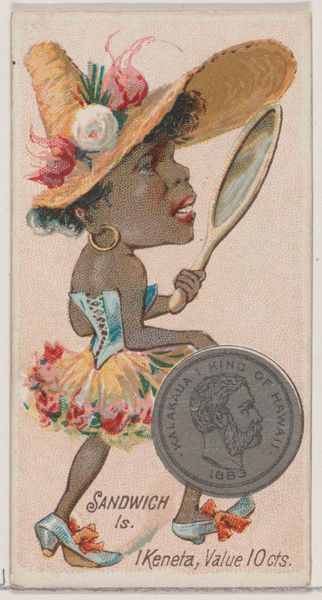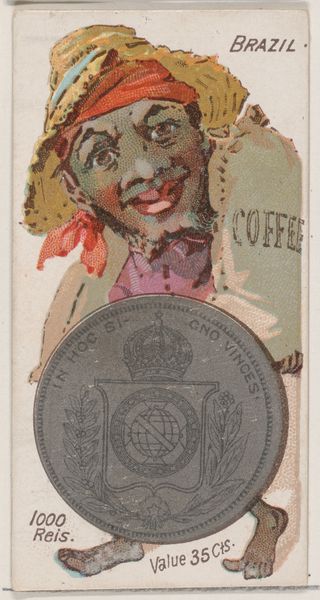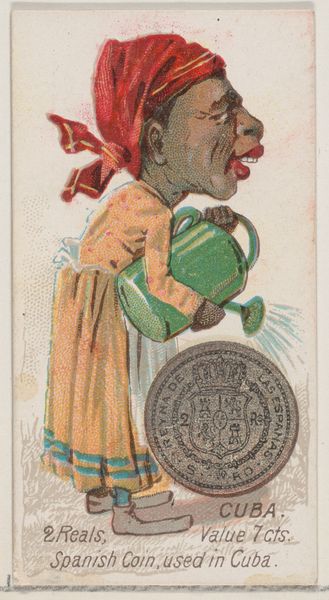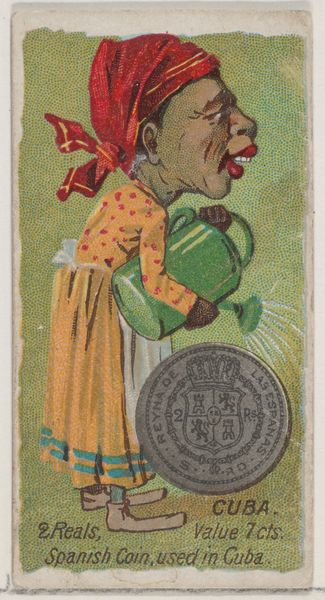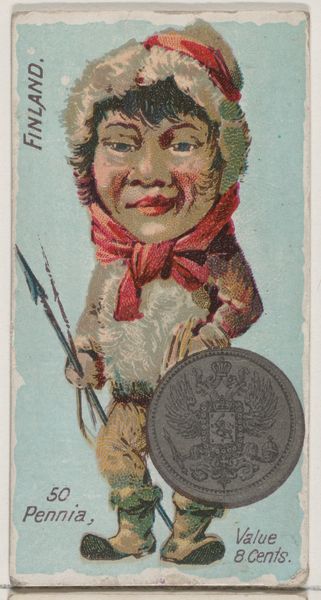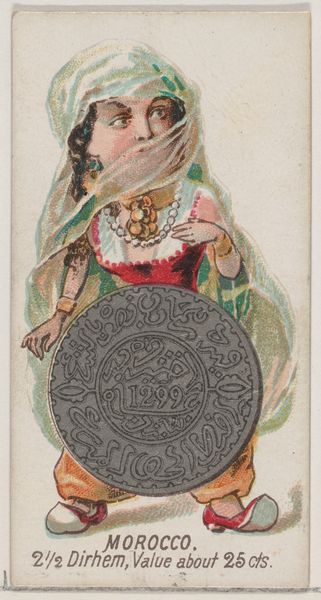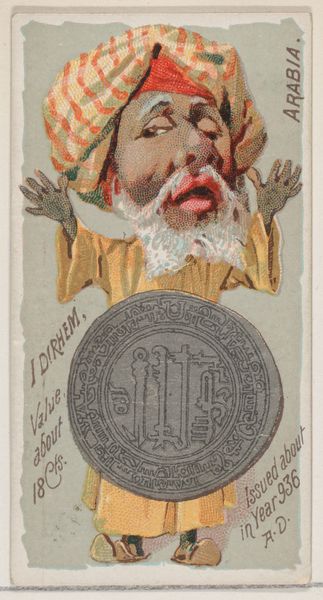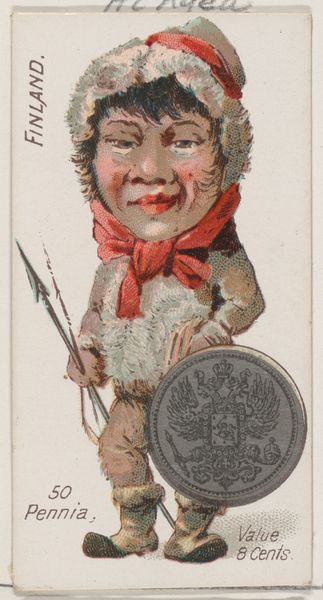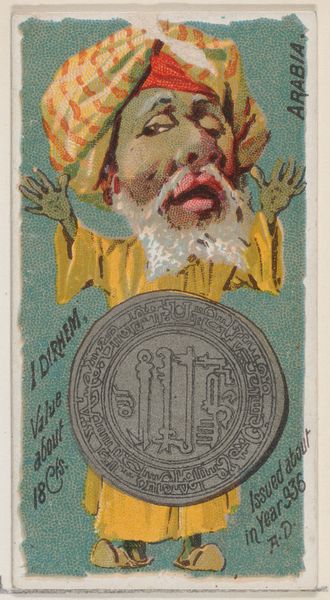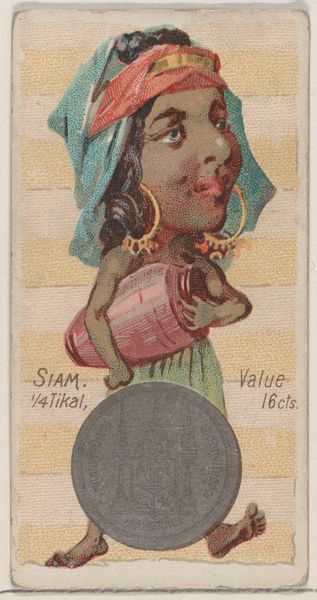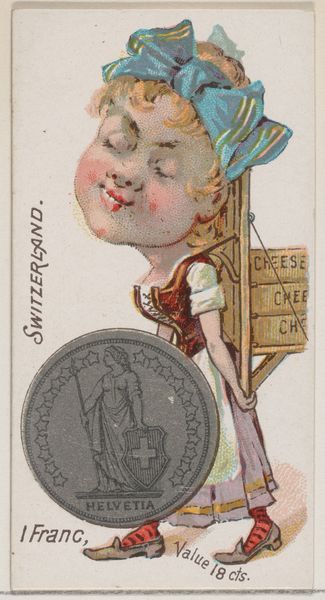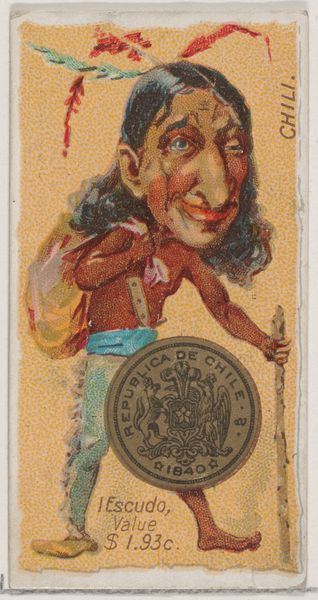
Caricatured Liberian, 1 Cent, from the series Coins of All Nations (N72, variation 1) for Duke brand cigarettes 1889
0:00
0:00
drawing, coloured-pencil, print
#
portrait
#
drawing
#
coloured-pencil
# print
#
caricature
#
figuration
#
coloured pencil
#
orientalism
#
genre-painting
#
coin
Dimensions: Sheet: 2 3/4 x 1 1/2 in. (7 x 3.8 cm)
Copyright: Public Domain
Curator: Ah, yes. This little piece is titled "Caricatured Liberian, 1 Cent," from the series "Coins of All Nations," created around 1889 for Duke brand cigarettes. Editor: Well, my first impression is... unsettling. The overt stylization— bordering on caricature— creates an almost grotesque feel. Is that meant to be playful or… something else? Curator: Its aesthetic impact is undeniable. Note how the artist uses coloured pencils and print to juxtapose the Liberian figure with the coin. The visual vocabulary employed is directly reflective of Orientalism, a fascination with and often misrepresentation of non-Western cultures prevalent at that time. Editor: Right, there’s that tension again. On one hand, the vibrant colours, the fan, even the playful shoes, try for lightheartedness, but they don't quite mask what feels like a very skewed, biased portrayal. I mean, the coin almost seems to be obscuring something more… nuanced? Curator: Semiotically, the fan and opulent hat might represent a sort of affected elegance, further distancing the depicted person from… perceived authenticity. The coin itself, emblazoned with "Liberia," functions as both signifier and object— a currency token representing a complex national identity reduced to a one-cent commodity. Editor: It is a jarring contrast! Like trapping a real person inside a cartoon frame to sell cigarettes. Did folks puff away while contemplating such a reductive image? Or did the intended consumer even notice the deeper layers we're peeling back? Curator: These cards were precisely that: commercial objects aimed at promoting both a product and a specific worldview. And by using art, and these characterizations, it made it digestible—a part of a much broader colonial perspective, that would permeate the late 19th-century imagination. Editor: Ultimately, it's a painful reminder. An object seemingly so frivolous, like a cigarette card, holds a dark mirror up to past prejudices. A tough visual pill to swallow, wrapped in candy-coloured artifice. Curator: Precisely. And in analyzing its structure and semiotic components, we reveal the insidious mechanisms by which power and prejudice can become embedded within the most unassuming artifacts. It's both visually striking and academically compelling.
Comments
No comments
Be the first to comment and join the conversation on the ultimate creative platform.
